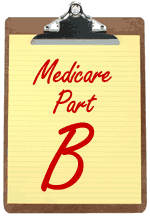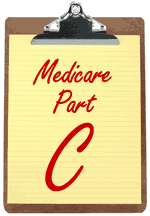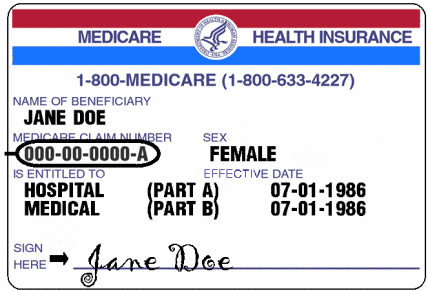Guide to Understanding the Different Parts of Medicare

A Look at Medicare
Unless you have dealt with Medicare, for a loved one or perhaps for a disability issue, chances are that you may not know much about it or how it works. For many of us, the subject of dealing with Medicare doesn’t come up until they reach the age of 65. At which time, they will be covered under the Medicare insurance plans. Those eligible for Social Security or Railroad Retirement Benefits are automatically eligible for Medicare benefits

Medicare is an insurance program administered by The Center for Medicare & Medicaid Services, CMS. It provides health insurance coverage for seniors, for some disabled under the age of 65 and those with End-Stage Renal Disease.
Unlike Medicaid, which is a state insurance plan based on income requirements, Medicare is a federal program and is the nation’s largest health insurance program. Most working Americans have paid into the Medicare program through payroll deductions and are entitled to benefits the first day of the month that they turn 65.
Forty Million people are currently covered under Medicare and those numbers are due to climb substantially within the next 10 -15 years.

Medicare is divided into 4 parts: Part A, Part B, Part C and Part D.
Part A is a basic hospital insurance plan and Part B is a voluntary supplement medical insurance to Part A.
Participating in Part C, although still Medicare, enables you to opt out of the traditional Medicare programs A & B and into a federally approved insurance plan through private insurance companies.
Part D is Medicare prescription coverage.

Part A
Part A is usually a premium free coverage, if you or your spouse paid Medicare taxes while working. The cost for those who do not qualify for premium free coverage (about 1% of participants) is $461.00 a month. Deductible rates for Part A increased in 2010 up to $1,100.
Part A - the Hospital Insurance Portion helps cover:
Inpatient care in hospitals (such as critical access hospitals, inpatient rehabilitation facilities, and long-term care hospitals)
Inpatient care in a skilled nursing facility (not custodial or long term care)
Hospice care services
Home health care services
Inpatient care in a Religious Non-medical Health Care Institution

Skilled nursing care is provided for up to 180 days, the first 20 days are fully paid once the deductable is met. The following 80 days fall under a co-insurance amount of coverage. Medically necessary home health visits as well as hospice services are provided. Psychiatric hospital care is covered up to one hundred ninety days during the individual’s lifetime.
Part A – The Services Portion
- Blood - If the hospital has to buy blood for you.
- Home Health Care - Doctor ordered limited medically necessary part-time care or physical therapy.
- Hospice – For terminally ill patients, that your doctor certifies, has less than 6 months to live.
- Inpatient hospital stays – Includes the room, care, drugs, supplies and therapy. This does not include private duty nurses or private rooms unless medically necessary.
- Skilled Nursing Facility – Only after a 3 day minimum hospital stay and your doctor must certify the necessity for continued daily skilled nursing care. Medicare does not cover long term care or custodial care.
The actual details are much more specific but this outline should give you an overall look at the different needs that are covered. For an in depth explanation, see Medicaid Part A.

Part B
Medicare Part B is a voluntary insurance plan available to anyone who is entitled to receive Part A. Participants must pay a monthly premium and are subject to an annual deductable of $155.00 for 2010. Straight Part B does have a co-insurance of 20%, but includes options for private plans. For the first time in 35 years, Social Security recipients will not get a cost of living increase in 2010. Due to the ‘hold harmless’ provision, which prohibits premiums from rising at a higher percentage than benefits, the monthly premium for most participants will still be $96.40. However, some of the newer enrollees (about 27%) will have to pay the new higher premium of $110.50.

You are automatically accepted into Part B under the same qualifications as listed for Part A. You can choose to opt of Part B. If you don't sign up for Part B when you are first eligible, you may have to pay a late enrollment penalty. This penalty adds a permanent cost to your monthly premium.
Part B pays for doctor fees, services and supplies. This includes outpatient costs as well as medically necessary services or supplies that are needed to diagnose or treat your medical condition and that meet accepted standards of medical practice.

The plan covers some preventative care but does not cover eye and hearing exams, routine physical exams, foot care, immunizations or private nurses.
Preventive services or care to prevent illness or detect it at an early stage, when treatment is most likely to work best can be covered (for examples see Medicare & You Handbook).
This is a simple overview of the Part B plan. The plans can vary quite a bit depending on whether you stay in the original Medicare or switch to a health provider. For an in depth explanation, see Medicare Part B.

Part C
Medicare Part C is the Medicare Advantage Plans offered by private companies approved by Medicare. They replace Medicare Part A (hospital) and Part B (medical).
The different types of Medicare Advantage Plans are:
- Health Maintenance Organization (HMO) Plans
- Preferred Provider Organization (PPO) Plans
- Private Fee-for-Service (PFFS) Plans
- Medical Savings Account (MSA) Plans
- Special Needs Plans (SNP)
Other less common types of Medicare Advantage Plans include:

Some plans expand coverage to include optical and dental needs. Certain plans may restrict your choice of doctors to their list of physicians. Others may charge additional premiums and some may stick to the same charge as original Medicare. Out of pocket costs may vary by provider. But all must follow rules set by Medicare. When reviewing your choices of Medical Advantage Plans, you should consider yearly deductibles, monthly premiums, out of pocket costs, co-payment, and of course, the type of health services you need and how often you need them.
With all of the plans offering different services, varying fee structures and rules, it is best to talk to a service representative of the company that you are interested in. Or, for more information, see Medicare Part C.

Part D
Medicare Part D is prescription coverage. Part D is available to anyone with Medicare through the original Medicare or through a Medical Advantage Program Plans but you must have both Part A and Part B to enroll. Each plan has their own set of coverage details and costs.
There are many changes in the recently passed health care bill that directly deal with Medicare. Closing the donut holes of prescription drug coverage and raising premiums are both addressed in the bill. Check with your provider for the most accurate information and how it affects you.
Two types of plans offer Medicare prescription drug coverage:
- Medicare Prescription Drug Plans. These plans (sometimes called "PDPs") add drug coverage to Original Medicare, some Medicare Cost Plans, some Medicare Private Fee-for-Service (PFFS) Plans, and Medicare Medical Savings Account (MSA) Plans.
- Medicare Advantage Plans (like an HMO or PPO) or other Medicare health plans that offer Medicare prescription drug coverage. You get all of your Part A and Part B coverage, and prescription drug coverage (Part D), through these plans. Medicare Advantage Plans with prescription drug coverage are sometimes called "MA-PDs."

For more information on all of the varying drug prescription plans, see Medicare Part D.
Visit the Medicare Prescription Drug Plan Finder for a list of Medicare drug plans in your area.
Enrollment
Medicare enrollment for those turning 65 is normally included when you sign up for Social Security benefits. For those wanting Medicare but not Social Security, check enrollment. Open enrollment
Medigap insurance policies are insurance policies designed to fill in the gaps left by Medicare plans.
The answers to frequently asked questions – FAQs.
For more information, visit Medicare.











